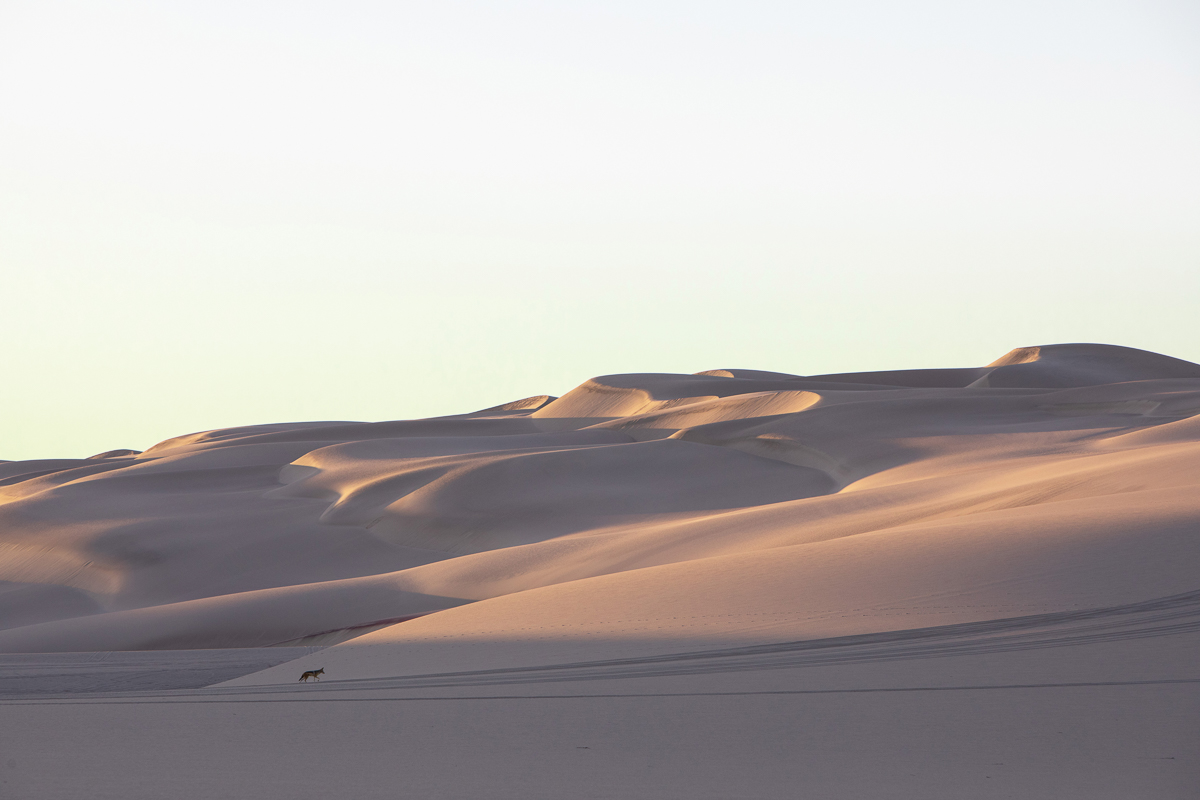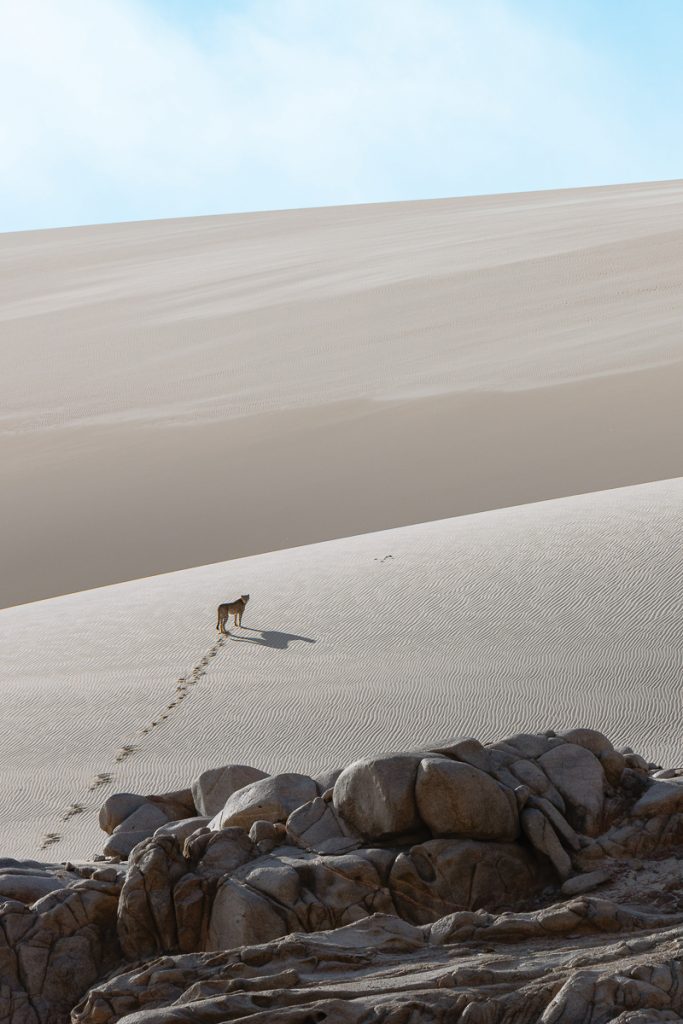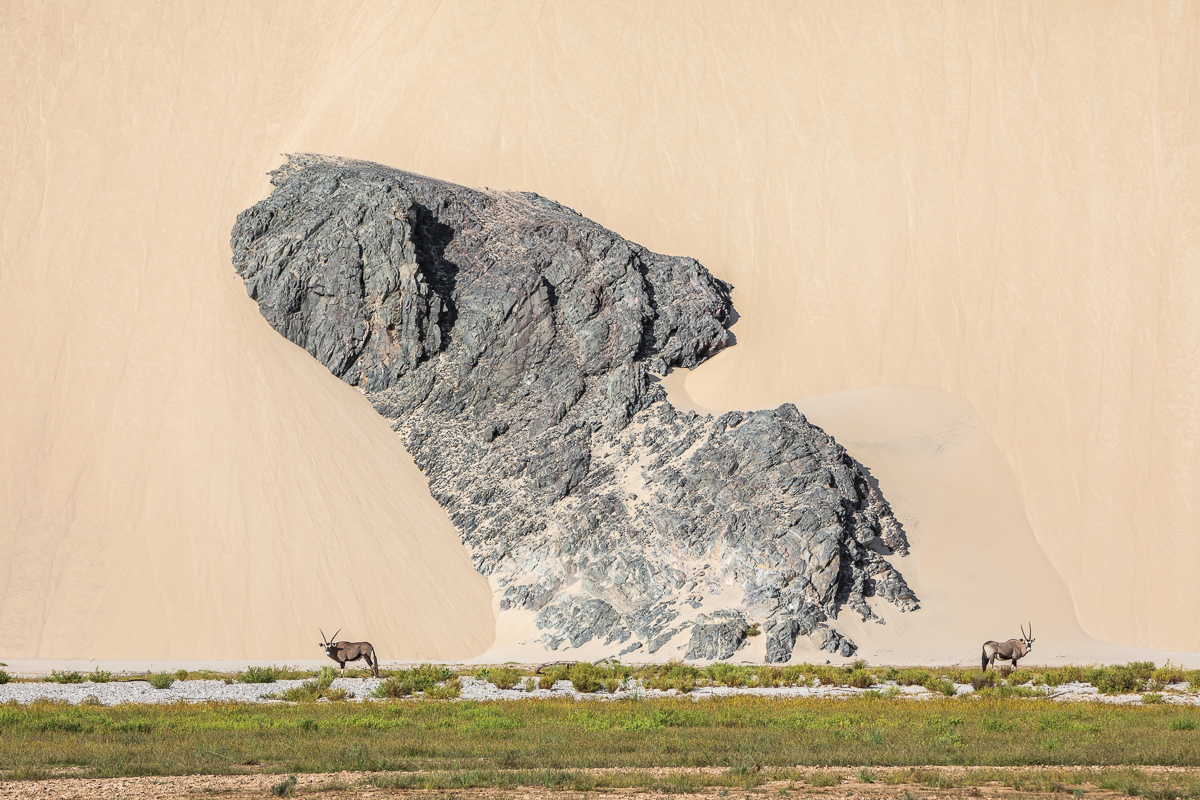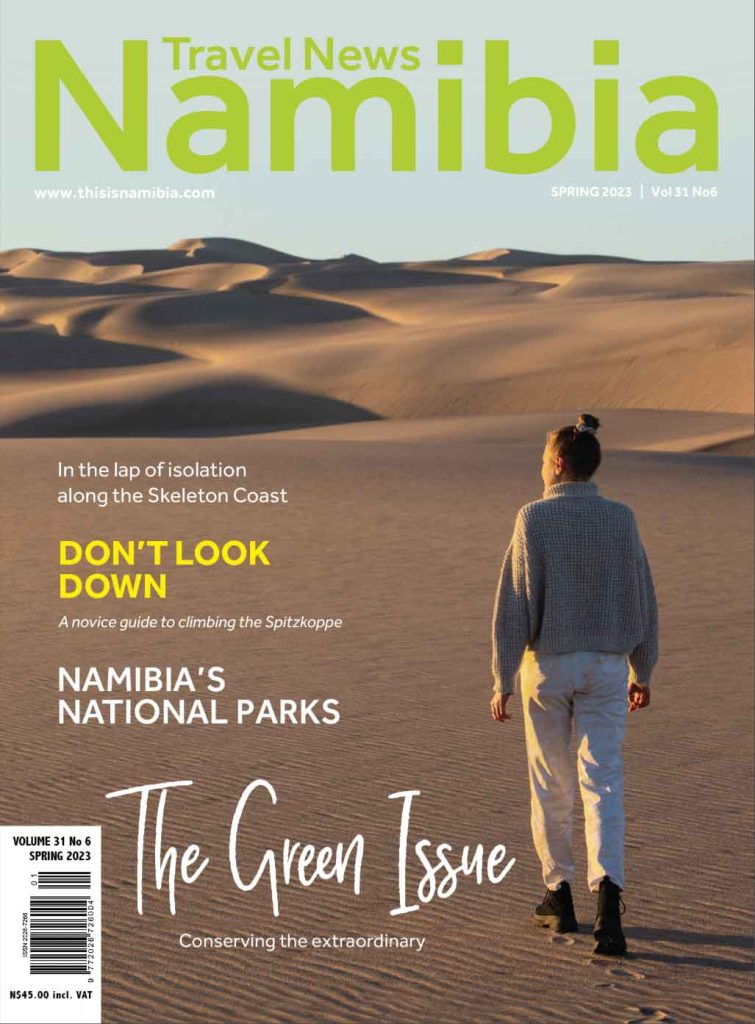

A sensory feast in the lap of isolation on the Skeleton Coast
There comes a moment of tense anticipation when you finally venture to a new destination, an uncharted adventure precluded with so much hype. Will this place that you have seen endlessly on social media, heard about from many travellers, envied and vowed to discover for yourself, really live up to all the expectations?
Text Charene Labuschagne | Photographs Le Roux van Schalkwyk
From the Spring 2023 issue
I have two items on my medium-term bucket list, one of them being a hot-air-balloon safari over the Namib Desert. The second, delightfully ticked off the growing list on a recent visit, was experiencing Shipwreck Lodge in the Skeleton Coast National Park.
It must be emphasised that this corner of our coastline remains one of the few truly untouched landscapes in the country. While wide open spaces are our forte, the favoured and easily accessible attractions have harboured clusters of lodges and activities, dotted around the noteworthy sights within Namibia. The Skeleton Coast National Park is well and truly the most forlorn place the country over, and Journeys Namibia managed to punctuate the deserted isolation with a few cabins on a dune, surrounded by sheer nothingness.
Getting there is half the journey. First, two large gates decorated with a skull and crossbones mark your entry to the fragile, protected area of the park from the southern gate. Then follows a long winding road between sea and sand to Möwe Bay, the small home settlement of ministry rangers and a handful of scientists. Another ride, this time with a seasoned guide, takes us over biscuit-coloured dunes and passes a few famed shipwrecks before trekking thick sand to the front deck of Shipwreck Lodge.
Here, the misty Atlantic winds whisper legends of pioneers and sailors who met an end on this coastline. The sands of time venture into every crevice of a wretched shipwreck, left to wither away until the end of time. Remnants of the nomadic Strandloper people, their clay pots and ostrich eggshell beads shattered and scattered, tell ever more fables of life in this deserted place. Our guide shares the legend of inland settlers, whose donkeys ventured through the Hoarusib River to the sea to graze by the consistent spring within eyesight of the lodge. The donkeys have since returned home, but the story sparks intrigue into the secrets of this special place.
Ten cabins are immaculately constructed with slanted and curved walls. Organic timber is employed in various angles and directions, constantly leading the eye to the next interior marvel. Portholes frame the desert and distant sea views in a nostalgically nautical style. And plush blankets and cushions beckon to be cuddled up in once the southwesterly wind begins to howl.
Good weather is not to be taken for granted on this coastline that is notoriously misty. We were lucky enough to have two splendid days of sunshine while at Shipwreck, calling for every outdoor activity on their roster.
On our journey to Möwe Bay, rumours began circulating that a few cheetahs were spotted near the lodge. I cannot begin to stress how utterly rare this is – the big cats roam freely inland, but very seldom do they venture this far west. We kept our fingers crossed, but simultaneously dismissed the likelihood of such a sighting. No point in getting our hopes up!
The sheltering game viewer sluggishly departed from the reception as we set our sights on the dry riverbed. This river runs through a most juxtaposed landscape. On our right, a 40-km-wide dune belt descended ceremoniously onto the flat surface of the Hoarusib. Peeking through the velvet-textured sand were contrasting black granite boulders, larger than life itself. Our guide nonchalantly mentioned that the monolithic rocks are the base of the dune belt. Under all that sand lies unfathomable masses of boulder.
To our left, the river’s rim was lined by soft grey granite structures, eroded endlessly to create hollows, holes, round peaks and surreal shapes. I have only just begun gawking at the landscape, unlike anything I had ever witnessed, when we spotted a small figure in the distance of the jeep track. A black-backed jackal, surely? Two… no three of them. Only, that instantly recognisable trot of a scavenger seemed more gracious, and the tail appeared a bit too long for a jackal.
You would not believe me if I were not accompanied by a photographer, but less than a kilometre into our nature drive, the rumoured cheetahs dashed across our path. The stealthy big cats came trotting over the dry riverbed from the dunes to the boulders on the other side, except, the previous sighting recorded four, and we had only seen three. With eager eyes, a long camera lens and a single pair of binoculars, we peered attentively at the dunes, surveying for the fourth cheetah. And sure as the sun rises in the east, tucked between the crescent of a skyscraper-high dune, hid a pair of perfectly rounded fluffy ears.
Her siblings had long disappeared between the rocks on the other side, so we spent a good hour moving at 400-metre increments, following the last cheetah as she climbed and hid, then appeared again. Slowly she moved up the slip face of a dune, leaving a jagged trail of footprints as she periodically stopped to peek over her shoulder.

Eventually we peeled ourselves away from the once-in-a-lifetime sighting, leaving the cheetahs to reunite on a single side of the river, and drove deeper into the Hoarusib and out of the canyon to a viewpoint. Life exists in this desolate place, from the desert-adapted elephant and lion (a potential sighting which we sacrificed for the cheetahs) down to the lichens that grow on the desert floor. From a distance they radiate green and orange hues easily mistaken for the colour of the soil, but these minute organisms flourish on top of rocks, forming lines of textured tangerine and frilly lettuce.
On our route back to the lodge, we passed through a massive gorge lined with jaw-dropping rock walls. Marbled swirls of black and burnt orange stand sentinel over a six-metre-wide stretch of the riverbed, where springbok and gemsbok graze unbothered. The natural wonder of this place continues to leave me speechless.
Bright-eyed and wonderstruck by the beguiling drive, our return to Shipwreck Lodge meant red wine by the woodburning stove and longing looks over the landscape. On the menu as we settled in for dinner was seared tuna steak, accompanied by an umami-loaded tahini and soya sauce drizzle. Silence fell across the entire dining room as our fellow guests were equally as enamoured by the taste sensation, perfectly prepared and paired with the misty and moody immediate surroundings.
Halfway through our three-course meal, a staff member did the rounds asking whether guests would like a fire started in the cabin stove. A resounding yes from everyone! When we returned to our sojourn after dinner, the room was engulfed in a warm glow from the fireplace, creating an uncanny cosy atmosphere. Curled up under the blankets, you drift into a calm slumber as the crackle of wood lulls you to sleep.
Awakened with the soft, filtered sunlight of dawn, the floor-to-ceiling windows in the bedroom look out onto the mouth of the Hoarusib and distant ocean. Shipwreck Lodge is one of those rare finds where staying inside the belly of a ship with a coffee and a book, while watching the landscape change with the coming and going of the sun, seems like the logical thing to do. The outdoor activities are endless and exhilarating, yet we find ourselves longing to return, because this cabin feels like home.
Spoiled with more splendid weather, after a wholesome breakfast and one of the best omelettes I have ever had, we embarked on a quad bike excursion onto the dunes. With ease and a crisp breeze, our guide took us up and over unfathomable stretches of beige hills, periodically stopping to take in the views that redefine the term “sand sea”. Injected with the adrenaline that comes from cruising down the steep slip face of a dune, your greatest challenge is focussing on driving as the landscape insists on being a show-off.
If ever you crave an ego death, I urge you to stand on top of a dune in the Skeleton Coast National Park. The term “speck of dust” takes on new meaning when surrounded by 360 degrees of endless sand.
Many more memorable meals were dished up, as the kitchen at Shipwreck set out to serve sensational seafood seeped in flavour. Even more glasses of red wine were savoured by the fireside, after sundowners on the beach and informative nature walks. Without a glimmer of doubt, Shipwreck Lodge lived up to every expectation, in fact, exceeding them. We stepped into a storybook, stayed in a metaphorical shipwreck, stimulated every one of our senses with food, fun and fireplaces, and departed feeling like family.
ACTIVITIES:
Shipwreck offers quad bike tours, nature drives, sundowners and lunches on the beach, as well as historically and geologically informative walks. All inclusive.
GETTING THERE:
Charter flights touch down at Möwe Bay, where a Shipwreck guide welcomes guests and transports them to the lodge with a roughly one-hour drive.
For self-drives, access to the park is either via the southern gate at Ugabmund, or southeastern gate at Springbokwater, where permits can be obtained. Self-driving guests park and leave their vehicles at Möwe Bay, where a Shipwreck guide takes over and drives to the lodge. Special arrangements can be made for self-drive guests wishing to access Shipwreck Lodge via the Hoarusib River.
NOTEWORTHY SIGHTS:
The clay castles of the Hoarusib are fascinating geological formations to be seen on a nature drive from Shipwreck. Lucky guests might spot the desert-adapted elephant and lion that freely roam the area. Remnants of the nomadic Strandloper people, like clay pots, stone tools and ostrich shell beads can be seen on a guided walking tour. Overall, the area offers awe-inspiring vistas, geological formations and untouched landscapes.

To book your adventure to the infamous Skeleton Coast visit www.shipwrecklodge.com.na






